Hoover HCV61C Handleiding
Bekijk gratis de handleiding van Hoover HCV61C (28 pagina’s), behorend tot de categorie Afzuigkap. Deze gids werd als nuttig beoordeeld door 107 mensen en kreeg gemiddeld 4.8 sterren uit 54 reviews. Heb je een vraag over Hoover HCV61C of wil je andere gebruikers van dit product iets vragen? Stel een vraag
Pagina 1/28

INSTRUCTIONS FOR INSTALLATION AND USE
MONTAGE- UND GEBRAUCHSANWEISUNG
INSTRUCTIONS POUR L'INSTALLATION ET L’UTILISATION
ISTRUZIONI PER L'INSTALLAZIONE E L’USO
INSTRUCCIONES PARA INSTALACIÓN Y USO
AANWIJZING VOOR GEBRUIK EN INSTALLATIE
BYCNHERWBB GJ GJKMPJDFYB> DSNZ:RJQ

ENGLISH
The appliance must be installed by a qualified person in compliance with the instructions provided.
WARNING: Failure to install the screw or fixing device in accordance with these instructions may result in
electrical azard.
Only for hoods with electronic control:
The 4th speed (intensive) is automatically lowered to 3rd speed after 5 minutes of operation to optimise energy consumption;
in hoods with voltage 120V/60Hz this function is not active and the 4th speed is indicated by the letter b (Booster).
- If the hood is left on (lights and/or motor), after 10 hours in the absence of commands from the user, it will automatically
switch to OFF condition with all services switched off. In hoods with voltage 120V/60Hz this function is not active.
- The Buzzer emits a “beep” each time that a command is set from the keyboard or remote control (optional).
- In the event of interruption of power during the hood, if you restore the hood in the OFF state, then the engine must
be reactivate manually.
If the supply cord is damaged, it must be replaced by the manufacturer, its service agent or similarly qualified persons
in order to avoid a hazard.
Wear gloves when carrying out installation and maintenance operations.
DESCRIPTION
The unit can be found in filtering hoods, exhaust hoods or in hoods with an outside motor. In the Filtering hoods
(Fig. 1) the air and steam taken up by the unit are purified with charcoal filters and returned to the environment
through the aeration grids on the side of the flue. WARNING: When using filtering hoods, both charcoal filters
and an air deflector (A) must be used. Located in the lower part of the flue, this deflector recycles the air to
the environment. The charcoal filters are not supplied. In the Exhaust hoods (Fig .2) an exhaust duct conveys
the steam and cooking odors directly outside through the wall/ceiling. Therefore they do not require charcoal filters.
In the hoods with an outside motor (Fig. 3), a vacuum suction unit must be connected; this exhaust will operate separately,
conveying the exhaust air through the unit. Only use vacuum units suggested in the original catalogue.
INSTALLATION
To facilitate installation, before starting remove the grease filters: press inward on the clamp at the handle and
pull the filter downward (Fig.4).
Wall fitting (Fig.5): making use of the appropriate drilling jig, apply the supplied blocks into the wall, and remember
the distance between the hood and the cooktop must be at least 65 cm. Insert two of the supplied screws so
that the apparatus can be hooked onto these ones by means of the holes provided on the appliance (use the
holes A; if the hood have the holes A and C, use only the holes C). Once the apparatus is hooked, fix it definitively
to the wall using the two other screws and the holes made at its bottom (B). To avoid damage make exclusive
use of the holes already prepared on the hood.
Securing the telescopic flue: Basic installation requirements: – Set the electrical power supply within the space
covered by the decorative flue. – If your unit is installed in an Exhaust hood or in a hood with outside motor,
prepare the air exhaust hole.
Place bracket (W) 50 mm from the ceiling and position this on the vertical of your hood, with the aid of the notches
on the centre of the bracket (Fig.6); using a pen, mark the 2 holes on the wall and then make the holes and
fit the screw anchors provided and proceed to secure the bracket using the 2 screws (provided).
Exhaust hoods and hoods with outside motors: connect the disposal duct to the air evacuation pipe of the hood;
use a flexible pipe and lock it to the air evacuation pipe of the hood with a metal hose clamp (pipe and clamp
are not provided).
Only for models with outside motor (Fig. 7): plug the hood into the outside control unit using the special terminal block:
remove wire clamp A and lid B from the wiring junction box. Secure the wire connecting the control unit to terminal C.
Then replace wire clamp A and lid B on the wiring junction box. The other end of the wire is secured to the terminal block
on the outside control unit.
Make all power connections to the hood by means of the power cable. Take 2 assembled flues and place these
on the upper surface of the hood. Raise the upper flue as far as the ceiling and secure it to the bracket using
the 2 screws (Fig.8).
Filtering hood: make all power connections to the hood using the power cable. Fasten the air baffle to the lower
flue as shown in Figure 9, using the 2 screws. Take 2 assembled flues and place these on the upper surface
of the hood. Raise the upper flue as far as the ceiling and secure it to the bracket using the 2 screws (Fig.8).
Also remember that charcoal filters must be used in the case of the filtering version; check to see whether such
filters are already fitted; if necessary, proceed to fit as follows, depending on the model type purchased:
- if the hood features round charcoal filters (Fig. 10), fit the charcoal filter by turning anti-clockwise.
- if the hood features a panel type charcoal filter (Fig. 11), remove the two metal filter retainers (M) and position

the charcoal filter inside the grease filter; fit the two filter retainers back on again to secure the charcoal filter.
OPERATION
Depending on the model, the unit is equipped with the following controls:
Controls shown in Fig. 12
:
Button A: light switch. Button B: first speed motor ON/OFF switch. Button C: second
speed switch. Button D: third speed switch. E: motor on light. THE MOTOR FUNCTION WARNING LIGHT (E) IS
NOT PRESENT IN SOME MODELS.
Controls shown in Fig. 13: Button A: Light switch; position 0: light off; position 1: light on. Button B: Motor
switch; position 0: motor off; position 1-2-3: motor on at speed I, II and III. C: Motor pilot lamp.
Controls shown in Fig. 14: Button A: turns the LIGHTS off. Button B: turns the LIGHTS on. Button C: decreases
speed down to minimum speed. If pressed for 2" the motor is turned off. Button D: activates the motor (calling
the last speed used) and increases the speed until reaching maximum. Button E: FILTER ALARM/TIMER RESET:
when pressing the key during display of the filter alarm (motor off) it resets the hour counter. When pressing the
key when the motor is running, the TIMER is activated and the hood will automatically be switched off after 5
minutes.
L1) The 4 green LEDs indicate the running speed.
L2) When the LED is red (motor off) it indicates the FILTER ALARM. When the LED is green (flashing) it indicates that
the TIMER has been activated with the key E.
FILTER ALARM: After 30h of operation, the LED L2 turns RED. It indicates that the grease filters need to be cleaned.
After 120h of operation, the LED L2 turns RED and flashes; It indicates that the grease filters need to be cleaned and
the charcoal filters replaced. After cleaning the grease filters (and/or replacing the charcoal filters), restart the hour counter
(RESET) by pressing the key E during display of the filter alarm.
Controls shown in Fig. 15: Button A: turns the lights off. Button B: turns the lights on.
Button C: decreases speed down to minimum speed. If pressed for 2" the motor is turned off.
If pressed for 2" when the Filter Alarm is active, the HOUR counter is reset.
Button D: starts the motor and increases the speed until reaching maximum
Button E: Activates/deactivates the sensor (AUTOMATIC or MANUAL mode). In automatic mode the sensor is active
and the LED L2 is on. The LEDs L1 indicate the running speed.
L1) The 4 GREEN LEDs signal the running speed.
L2) When the LED is GREEN it indicates AUTOMATIC mode. When it is off, it indicates MANUAL mode. When the LED
is RED, it indicates the Filter Alarm.
FILTER ALARM: Displayed for 30" when the motor is off:
After 30h of operation, the LED L2 turns RED. It indicates that the grease filters need to be cleaned.
After 120h of operation, the LED L2 turns RED and flashes; It indicates that the grease filters need to be cleaned and
the charcoal filters replaced.
After cleaning the grease filters (and/or replacing the charcoal filters), restart the hour counter (RESET) by pressing the
key C during display of the filter alarm.
GAS SENSOR SENSITIVITY: The sensitivity of the sensor can be modified to suit your requirements. To modify the
sensitivity, the appliance must be in manual mode (i.e. the LED L2 must be off); If not, press the key E.
Modify the sensitivity by simultaneously pressing the keys D and E. The set sensitivity is indicated by the 4 green LEDs.
By means of buttons C(-) and D(+) the desired sensitivity is set. Store the “new” sensitivity by pressing the key E.
ATTENTION: TO PREVENT DAMAGING THE SENSOR, DO NOT USE SILICONE PRODUCTS NEAR THE HOOD!
Controls shown in Fig. 16: Button A: turns the lights on/off; every 30 hours of operation the corresponding pilot
lamp (S) comes on to indicate that the grease filters must be cleaned; every 120 hours of operation the
corresponding pilot lamp (S) flashes to indicate that the grease filters must be cleaned and the charcoal filter
replaced. To restart the hour counter (RESET), hold the button A pressed down for about 2” (while the pilot lamp
S is on). Button B: drives the motor in first speed (the corresponding pilot lamp comes on); when holding it down
for about 1”, the motor cuts out; when pressing the button a second time (while the pilot lamp is on) , the TIMER
is activated and thus the motor stops after 5’ (the pilot lamp flashes). Button C: drives the motor in second speed
(the corresponding pilot lamp comes on); when pressing the button a second time (while the pilot lamp is on) ,
the TIMER is activated and thus the motor stops after 5’ (the pilot lamp flashes). Button D: drives the motor in
third speed (the corresponding pilot lamp comes on); when pressing the button a second time (while the pilot lamp
is on) , the TIMER is activated and thus the motor stops after 5’ (the pilot lamp flashes). Button E: drives the
motor in fourth speed (the corresponding pilot lamp comes on); when pressing the button a second time (while
the pilot lamp is on) , the TIMER is activated and thus the motor stops after 5’ (the pilot lamp flashes).
Pay special attention to the grease filters; to remove the filter: push inward on the clamp at the handle andpull the filter
downward. Wash out the filter using a neutral soap. If the model purchased has the controls shown in Figure 12/13: the
grease filter must be cleaned periodically: exactly how often depends on use (at leastonce every other month). If the
Product specificaties
| Merk: | Hoover |
| Categorie: | Afzuigkap |
| Model: | HCV61C |
Heb je hulp nodig?
Als je hulp nodig hebt met Hoover HCV61C stel dan hieronder een vraag en andere gebruikers zullen je antwoorden
Handleiding Afzuigkap Hoover
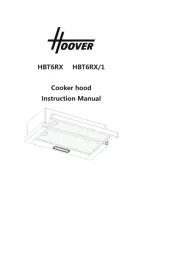
10 December 2024
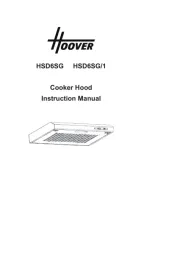
10 December 2024

22 Augustus 2024

22 Augustus 2024

30 Juli 2024

17 Juni 2023

6 Juni 2023

2 Juni 2023

31 Mei 2023

26 Mei 2023
Handleiding Afzuigkap
- Corberó
- Infiniton
- Thermador
- ZLine
- Axiair
- Premium Levella
- Flama
- Adelberg
- Classique
- Scholtes
- Elica
- Itho
- AEG
- Unox
- Emilia
Nieuwste handleidingen voor Afzuigkap
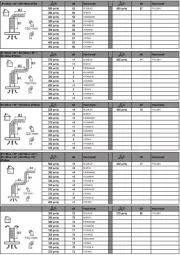
29 Juli 2025
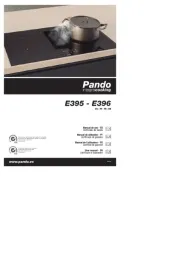
29 Juli 2025

29 Juli 2025
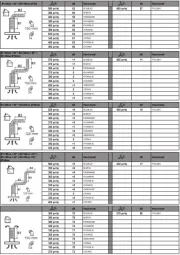
29 Juli 2025
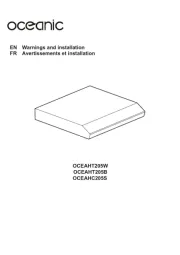
29 Juli 2025
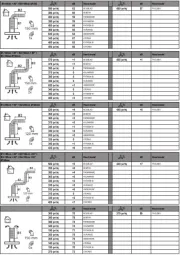
29 Juli 2025
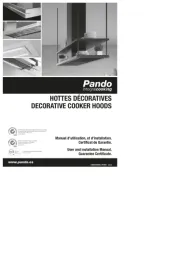
29 Juli 2025
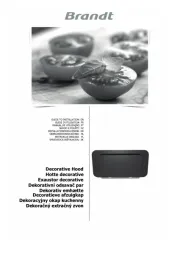
29 Juli 2025
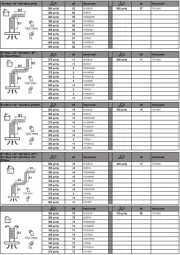
29 Juli 2025
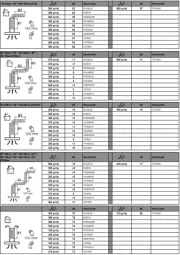
28 Juli 2025